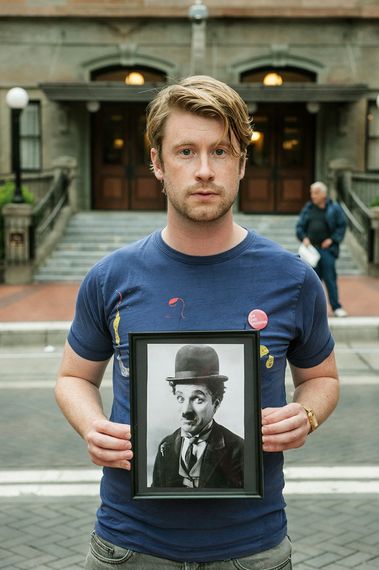Last month marked the 100th anniversary of Charlie Chaplin's first film. In tribute to the man George Bernard Shaw called "the only genius of motion pictures" I made a pilgrimage to the exact place where he signed his first film contract and his incredible cinematic journey began.
Chaplin's first contract with Keystone Studios was signed in the rather surprising location of Portland, Oregon on September 25th 1913. There was nothing that significant about the deal. He was offered the standard wage of a Keystone clown of $150 a week. However, it was a significant moment for cinema. Over the next few years, Charles Spencer Chaplin would go from being a promising star of the British music hall to the twentieth century's most recognised man.
In reality, the deal could have been finlaised anywhere. Keystone had been chasing the young performer while he toured the US with Fred Karno's British theatre troop in 'A Night At The London Club.' However, there does seem something significant, to me at least, that it happened in Portland.
In 2010 I'd grown restless in London and was searching for somewhere new. When I visited Portland, Oregon, I fell for it straight away. This rainy city nestled in the Pacific Northwest of the US struck me as a warm and welcoming place, a city which outsiders, artists and alternative thinkers can call home.
Of course, a lot has changed since 1913 and the outsider Chaplin first rolled into town...
I arrive at Portland's Pioneer Courthouse Square. The Keystone contract was signed was at old Portland Hotel, where as fate would have it Chaplin was sharing a room with the great Stan Laurel. However, the building sadly no longer stands.
Surveying the square, for a moment I'm a little overwhelmed by the activity around me. Swarms of people brush past, faces down, glued to their iPhones. Cars and busses zip by. I wonder what the Little Tramp would make of all this noise.
The world certainly looks different now. On the far side of the square a multiplex cinema is advertising the latest Hollywood releases. This is the era of the 3D blockbuster. Is it just nostalgia that still attracts me to Chaplin's simple, silent films?
I'm beginning to feel a little ridiculous, stood on the corner with a little photo of my hero. What did I hope to get out of a pilgrimage to a building that no longer stands?
Suddenly a homeless man approaches me and asks for some change. I pat my pockets apologetically, for a moment caught in my own ludicrous pantomime. Spotting the photo of Chaplin I'm holding he gives the thumbs up. From one tramp to another.
I start to notice more of the people gathered at the square. In the very middle, a couple stare into each other's eyes, oblivious to the bustle around them. On the corner of Alder an white-haired man is holding a sign protesting military involvement in Syria. He notices my portrait and tells me he lost a son in Iraq.
As I round the corner, a man in a top hat rides past me on a unicycle. He swerves in an attempt to avoid a lady and her dog and I let out a laugh.
And then suddenly it hits me. The world we live may look very different to Chaplin's day, but human experience is largely the same. We love, we lose, we laugh and, sometimes, we ride unicycles.
I glance at the portrait in my hand. With his acute eye for the idiosyncrasies and complexities of our behaviour, Chaplin understood what it means to be human. The Little Tramp is as much an everyman as he is an individual. We see ourselves in his attempts to survive, to find love and to be accepted. And, in the world around him, we see the same selfishness, hypocrisy and ignorance as we do today.
As his career progressed, Chaplin used comedy to explore darker truths, confronting the hypocrisy of religion in The Pilgrim, mocking the 20th century's pursuit of progress in Modern Times, and taking on Hitler in The Great Dictator. Yet from the early slapstick through to the later satire, there remains an unflinching belief in the power of laughter to cut through our suffering and to confront difficult truths that otherwise might be unpalatable.
Across the square a group of tourists spot the portrait I'm carrying. They point and laugh and I'm moved at the thought that this little man from Kennington with dark hair and blue eyes still has the power to make us smile.
Because one hundred years later the world still needs people like Chaplin. He held a mirror up for us to laugh at our limitations, to weep at injustice, and to find hope in our ability to love. In his 83 films, Chaplin, perhaps more than any other filmmaker, showed us what it means to be human.
That evening, when I look back at a photo of me rather too solemnly holding Chaplin's portrait in the square, I realise a man in the background is doing up his flies. The smirk on Chaplin's face is perfect. It's almost like he knew.
But then, I suppose he did.

Photo by Randall Garcia
For more info on Greg's film and comedy work visit www.gregash.co.uk